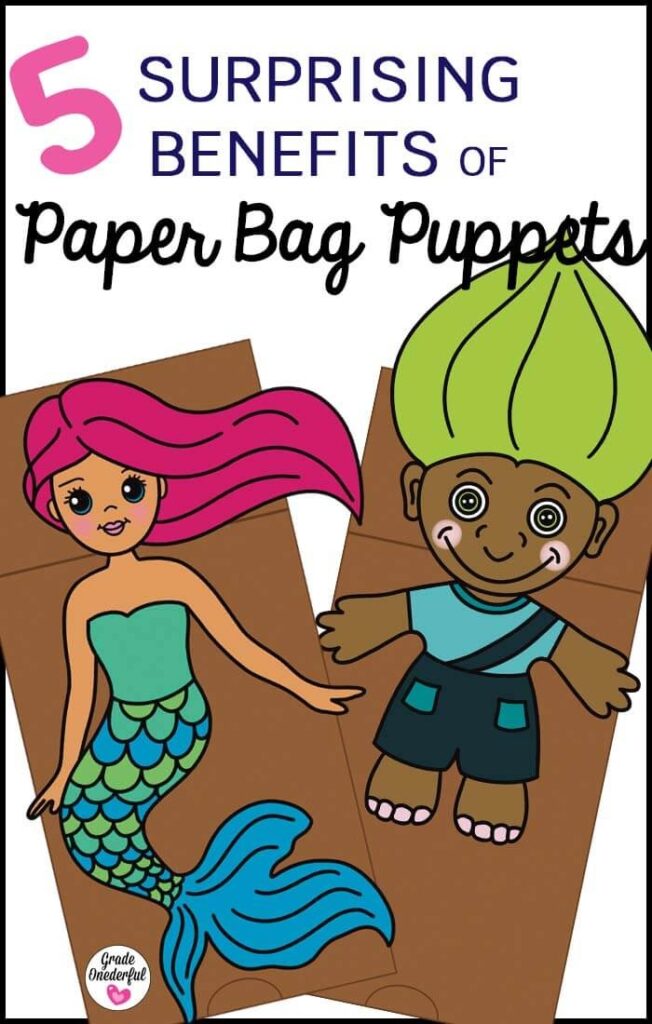Puppets are Magical
If you’ve ever watched a group of young children during story time, you know the magic that happens when a puppet appears. Eyes widen, hands shoot up, and imaginations ignite. Among the many creative and surprisingly powerful tools available to early-childhood educators are paper bag puppets.
Simple? Yes. Silly? Absolutely. But don’t let that fool you. Puppets can support big learning outcomes.
Before I begin, let me quickly share my latest collection of paper bag puppets:
These little cuties are part of a growing bundle, with the zombie and troll being the latest additions. There are two more puppets still to be added. You can see them on TPT if you’d like a closer look.
Why You Want to Include Puppets in Your Classroom
1. Boosts Creative Expression
Children naturally love to pretend, and puppets give them a safe way to explore characters, voices, and feelings. They invite children to invent stories, develop personalities, and experiment with imaginative play.
- They can give the ogre a voice—grumpy, gentle, goofy.
- They can decide what the mermaid likes, where she lives, and what she needs.
- They can even retell familiar stories (like The Three Billy Goats Gruff) from the troll’s point of view.
This type of expressive play strengthens language skills and supports creativity that extends far beyond puppet time.
2. Encourages Social and Emotional Learning (SEL)
Puppets are perfect for helping young children explore emotions and empathy.
Teachers can use puppets to:
- Model problem-solving (“Our unicorn is upset because he lost his favourite rainbow candy. What can he do?”)
- Explore feelings (“The yeti says he’s lonely. What might help him feel better?”)
- Practice communication and turn-taking during puppet conversations.
Children often feel safer sharing their own feelings through a puppet, making it a gentle tool for SEL in any early-learning environment.
3. Supports Language and Literacy Development
Puppets are one of the best ways to get children talking—and talking leads to learning.
A puppet helps kids:
- Expand vocabulary (words like “bridge,” “grumpy,” “tiny,” “giant” are encouraged when using the troll puppet, for example)
- Practice dialogue during storytelling
- Retell plot events or sequence ideas
- Strengthen listening comprehension during puppet-led lessons
Even shy students often come out of their shells when a puppet is involved.
4. Enhances Fine Motor Skills
Making and using a paper bag puppet involves essential fine motor practice. Crafting a puppet allows children to:
- Carefully practice cutting out the face and body
- Glue items in place
- Decorate or color the bag
- Manipulate the puppet during play
These small hand movements support readiness for writing and other classroom activities.
5. Makes Learning Feel Playful and Accessible
This is one of the biggest wins of all. A paper bag puppet:
- Costs almost nothing
- Requires simple materials
- Can be customized by each child
- Works well for large groups, small groups, or one-on-one activities
Because the puppet is homemade, kids feel ownership and pride—making them more engaged and eager to participate.
Final Thoughts
Paper bag puppets may seem like just a craft, but for preschool and kindergarten children, they’re much more. They’re a tool for storytelling, emotional learning, creativity, communication, and community building—all wrapped up in one delightful little puppet.
So grab a paper bag, one of my puppet templates, a few scraps of craft materials, and let the magic begin. Your students won’t just be entertained—they’ll be learning in ways that feel joyful, natural, and unforgettable.
Thanks for stopping by!


